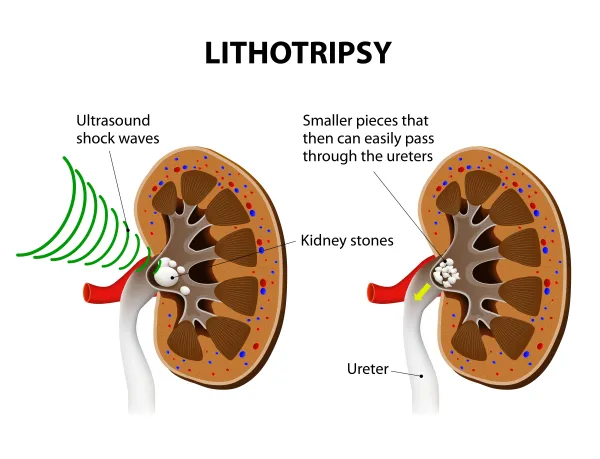Palmetto: 21 Percent of Internal Medicine E/Ms Included Modifier 25

Use this MAC’s data to compare your billings to other internists nationwide.
Ever wonder if your modifier billing patterns are “normal?” Now’s the chance to find out.
Part B MAC Palmetto GBA published a Comparative Billing Report (CBR) in February to illustrate the way that internal medicine specialists used modifier 25 (Significant, separately identifiable evaluation and management service by the same physician or other qualified health care professional on the same day of the procedure or other service). Palmetto launched the analysis after the OIG targeted modifier 25 as one that is vulnerable to fraud and waste, the MAC said.
Background: CBRs are tools that the government uses to offer insight into billing and coding trends among practices. CMS partners with its contractor eGlobalTech to produce the reports, which you can find at www.cbrinfo.net. You can use the data from CBRs to see where you stand when it comes to the frequency of billing certain services, codes, or modifiers.
Here’s What Auditors Seek
This CBR reviewed the claims data of about 22,000 internal medicine specialists to evaluate their use of modifier 25 on E/M services for established patients.
Auditor insight: Auditors look for documentation of your separate and distinct E/M service when reviewing claims for modifier 25, said Palmetto GBA’s Cyndi Wellborn during a March 16 webinar explaining the CBR report’s findings. “One auditor suggests taking a black magic marker and crossing out the documentation for the procedure itself, as well as any E/M documentation directly related to the procedure,” she said. “If there is enough documentation left to support a significant level of service, an additional E/M service could be billed.”
For example, documentation reflecting only a prescription refill would not be sufficient to report an additional E/M code with a service, Wellborn said.
Although you needn’t have a separate diagnosis code to report modifier 25, the documentation has to support the extra work that went “above and beyond what would normally be associated with the procedure,” Wellborn said. For instance, a patient presents for a knee joint injection, but says that her pain has worsened and she can no longer sleep or perform her normal activities.
“In addition to the minimal evaluation needed to assess the patient’s need for and carry out of the joint injection procedure, the physician takes an additional amount of history and performs further evaluation in order to assess the patient’s suitability for a total knee arthroplasty,” Wellborn explained. “It would be the additional E/M that would drive the level of service chosen.”
Here’s What the Report Revealed
Overall, internal medicine physicians billed 21 percent of their E/M claims with modifier 25 appended, but this number varied by state, said Cheryl Bolchoz, a Palmetto GBA statistical analyst, during the webinar. Providers in Alabama reported a whopping 30 percent of services with the modifier, while those in Idaho and Vermont appended modifier 25 on just 11 percent of claims.
By the minute: The CBR also includes the total minutes that most internal medicine specialists spend on E/M services, both with and without modifier 25, Bolchoz explained. Overall, in the US, internists spend 21.17 minutes with a patient during an E/M service that has modifier 25 appended, and 20.17 minutes when modifier 25 is not used, although this, too, varies by state.
Find Your Numbers
The practices that Palmetto reviewed as part of the CBR received personalized reports indicating whether they billed modifier 25 more or less frequently than other internists in their states, but if you weren’t part of the sample, that doesn’t mean you’ll never know where you stand.
If you’d like to compare your modifier 25 usage to the average, run a calculation on the percentage of your E/M claims that include the modifier, then check out Palmetto’s chart to find out where you stand in relation to the other internal medicine providers in your state. If, for instance, you are in Florida and you append modifier 25 to 23 percent of your claims, you’ll know that you’re right on track with most physicians there.
Here’s how: Your practice management/billing software should be able to provide information about your modifier 25 usage, says Jean Acevedo, LHRM, CPC, CHC, CENTC with Acevedo Consulting, Inc. in Delray Beach, Fla. “A CPT® productivity report, including modifiers, should show each code billed without any modifier and the same codes separately with each modifier utilized,” she tells the Insider. “The report will have the number of times each was billed.”
You can generate the CPT® productivity report by date range, code range (for instance, just E/M codes), by provider, etc., she says.
Don’t panic: If your percentage of modifier 25 usage is higher than the average, it doesn’t necessarily mean you’re billing incorrectly, but you should take a look at your documentation to ensure that it meets the modifier 25 requirements.
“You may have legitimate reasons why you are different than your peers,” Palmetto said in the CBR’s “Frequently Asked Questions” document. “For this reason, we encourage you to perform a self-audit to verify that you have sufficient documentation to support your billings.”
Resource: To read more about the CBR for modifier 25, visit www.cbrinfo.net/cbr201603.html.




